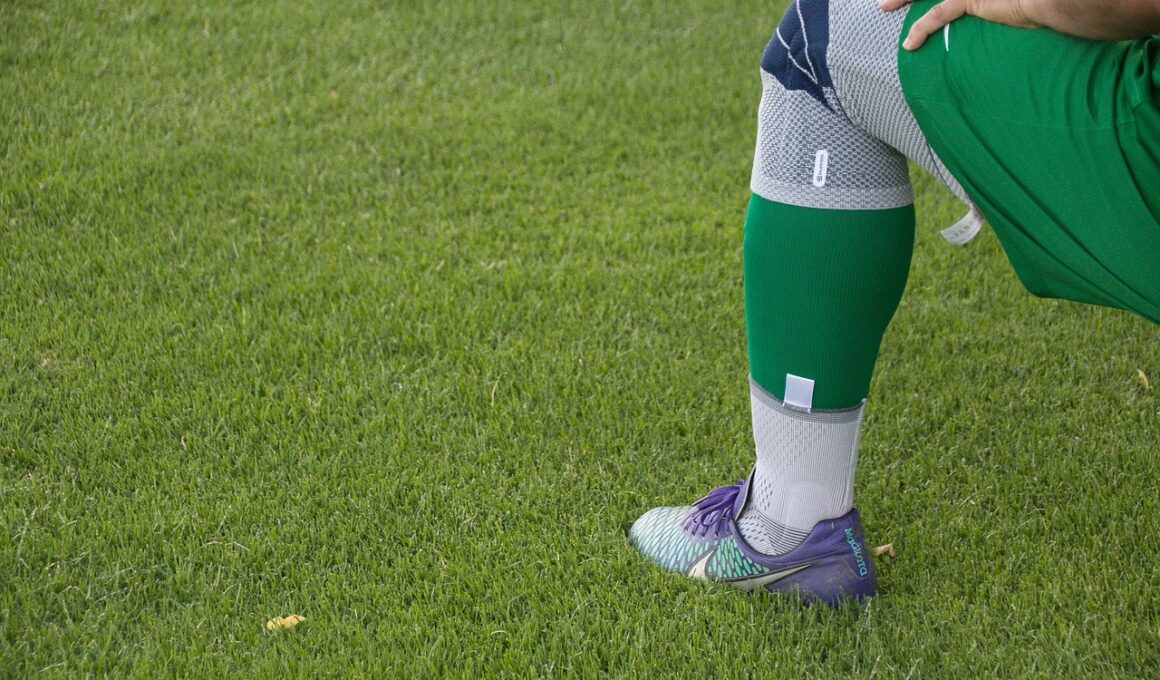Preventing ACL Injuries with Effective Prehabilitation
Anterior cruciate ligament (ACL) injuries are a troubling concern for athletes and active individuals alike. These injuries can lead to significant downtime and affect performance. Fortunately, effective prehabilitation can play a critical role in injury prevention, particularly for the ACL. Prehabilitation focuses on strengthening the muscles surrounding the knee, enhancing flexibility, and improving overall movement mechanics. Through a series of targeted exercises, individuals can prepare their bodies for the physical demands they may encounter during sports. This preparation helps to reduce the risk of injury significantly. In a well-structured prehabilitation program, exercises should include plyometrics, strength training, and agility drills. Examples include single-leg hops, balance work, and resistance training targeting the quadriceps and hamstrings. Consulting with a physical therapist or athletic trainer can help in creating a customized plan tailored to individual needs. Monitoring progress and making necessary adjustments over time is essential for maximizing the benefits of these programs. Fostering a commitment to regular prehabilitation can greatly increase athletic performance and, more importantly, reduce the risk of ACL injuries.
One vital aspect of prehabilitation for ACL injury prevention is the incorporation of balance and proprioception exercises. These exercises enhance an individual’s body awareness and coordination. Improved balance can significantly reduce the risk of sudden knee injuries during rapid changes in movement. Simple exercises such as balance boards, single-leg stands, and stability ball activities are excellent additions to a prehabilitation routine. Athletes often underestimate the importance of balance training; however, research shows that those who incorporate such exercises are less likely to suffer from ACL injuries. Engaging in plyometric training, which focuses on explosive movements, also contributes substantially to knee stability and overall strength. Specific plyometric exercises such as box jumps, lateral hops, and depth jumps can lead to better neuromuscular control. Combining these techniques provides a solid foundation for injury prevention strategies. Furthermore, implementing agility training, which involves rapid acceleration and deceleration movements, helps simulate the effects of real game scenarios. Athletes should always progress gradually in intensity, ensuring adequate recovery to prevent overtraining and injuries.
The Benefits of Strength Training in ACL Prehabilitation
Strength training is a cornerstone in the prevention of ACL injuries. By improving the strength of muscles that support the knee joint, athletes can increase their overall stability and resilience against injury. Exercises targeting the quadriceps, hamstrings, calves, and glutes are essential components of an effective program. Resistance training utilizing free weights, resistance bands, and body weight exercises can all be beneficial. Research has shown that individuals who engage in regular strength training specific to the lower body are more prepared for the physical demands of their sport. It is crucial to focus on proper form and technique during strength exercises to avoid the risk of injury while performing these activities. Additionally, working with a qualified trainer can ensure that individuals perform exercises correctly and at appropriate intensity levels. As individuals progress in their prehabilitation journey, it may be beneficial to incorporate functional movements that mimic specific sport-related actions. This not only enhances strength but also works on muscle coordination and balance essential for athletic performance.
Flexibility plays a significant role in ACL injury prevention through prehabilitation. A well-rounded program should include stretching and mobility exercises aimed at increasing flexibility in the hips, quads, hamstrings, and calves. Greater flexibility allows for a broader range of motion, which is crucial in preventing injuries related to sudden movements or pivots. Dynamic stretching should be included in the warm-up routines prior to physical activity, as it prepares the muscles for movement. Stretching can be further enhanced by including practices such as yoga or Pilates, which emphasize body control. Additionally, implementing foam rolling or self-myofascial release techniques assist in maintaining muscle elasticity and alleviating tension. This improved flexibility can lead to reduced muscle stiffness and a lower risk of strains or tears. Athletes should remember that flexibility training is not a standalone approach but should be integrated synchronously with strength, balance, and agility work to offer the best protection against potential injuries. With lower stiffness and better flexibility, athletes effectively manage high-impact forces during sports.
Sport-Specific Prehabilitation Techniques
In tailoring a prehabilitation program for ACL injury prevention, it’s vital to consider sport-specific demands. Each sport presents unique movements and potential risk factors for injury. For instance, soccer players engage in rapid changes in direction, while basketball players frequently jump and land. Prehabilitation strategies should be customized to address these specific aspects. Practicing drills that mimic actual game scenarios will increase muscle memory and technique. This specific focus enhances strength and flexibility in relevant muscle groups. Other sports may require different drill focus, emphasizing stability for cycling or rotational strength for tennis players. Coordinating with coaches and athletic trainers ensures that prehabilitation drills align with skill training. Furthermore, including sport-specific movements in agility and plyometric drills can become effective injury prevention tools. By practicing these targeted actions, athletes can learn how to move more efficiently and safely during play. Additionally, maintaining an open line of communication about individual progress among trainers and athletes will allow for timely adjustments to the program to ensure maximum benefits.
Incorporating recovery strategies into a prehabilitation program is essential for optimizing performance and preventing ACL injuries. Recovery techniques may include adequate rest, nutritional support, and injury management strategies. An appropriate recovery period following any training is critical, allowing for muscle repair and growth, ultimately leading to enhanced performance. Post-training activities such as stretching, foam rolling, and ice baths can improve recovery. A balanced diet rich in proteins, healthy fats, and carbohydrates also supports muscle recovery while fueling performance. Hydration plays a key role as well and must not be overlooked. Proper hydration levels help maintain muscle function and reduce cramping during physical activity. Additionally, prioritizing sleep aids recovery, as adequate rest contributes to overall well-being and performance. Athletes should track their sleep patterns and ensure that they commit to achieving 7-9 hours of quality sleep per night. Regular evaluations by a healthcare professional can help monitor overall healing for those with previous injuries and questions. Maintaining consistency across all aspects of the prehabilitation program creates a comprehensive approach that minimizes injury risk and enhances athletic performance.
Conclusion: Commitment to Prehabilitation
To summarize, someone serious about their athletic career must recognize the importance of prehabilitation in preventing ACL injuries. A comprehensive prehabilitation program requires a blend of strength training, flexibility work, balance, and sport-specific exercises. Each component strengthens and enhances the stability of the knee joint, reducing injury risk through targeted training. Lifelong athletic careers often hinge on implementing the right strategies early on. Plus, the long-term benefits of adopting a prehabilitation regimen extend beyond injury prevention, leading to improved overall athletic performance. As such, athletes should be proactive and dedicated to establishing prehabilitation as part of their training routine. Regular evaluations of one’s program encourage progress tracking and modifications according to individual needs. In combining each essential aspect of prehabilitation, athletes equip themselves with the tools necessary for success. By fostering a commitment to these preventive strategies and focusing on injuries before they occur, future injuries may be avoided. Ultimately, prehabilitation represents a necessary investment in future athletic endeavors and performance.


